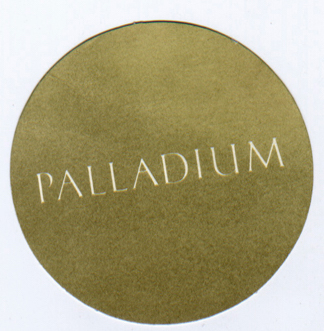Cara Perlman: Finger-Paint Portraits, Tin Pan Alley, 1981–82
By Marc H. Miller
Cara Perlman’s finger-paint portraits date from a time when a lack of opportunity in the established galleries liberated artists to experiment and discover for themselves fresh reasons to make art. Perlman’s portraits, executed with a painting method typically used by children, fit broadly into the 1980s wave of neo-expressionism but they go way beyond that context. For Perlman their raison d’être lay less in art world trends than in her own social imperatives. Making portraits from life with finger paint was a fun way to connect with people. Many of the portraits are of Perlman’s friends in Collaborative Projects Inc. (COLAB), an artist group that in the summer of 1980 organized the now-famous Times Square Show in which Perlman participated. Others are of Times Square locals who frequented Tin Pan Alley, a basement bar located near the TSS show, which became popular with artists, and where Perlman worked as a bartender.
Making a vital art connected to real life was the goal of many young artists working in the late 1970s and early 1980s. The Times Square Show, provocatively sited in a former massage parlor on 41st Street, was for some of these artists a breakthrough moment leading to new types of socially infused art rooted in the problem plagued neighborhood. For the young artists who worked on the collaborative do-it-yourself venture it was a bonding experience that marked the rise of a new generation. At the TSS Perlman showed Topless, a film she made with her roommate Jane Sherry that gave a feminist twist to Sherry’s experience working as a topless dancer in the area. Perlman’s finger paint portraits of COLAB artists and Tin Pan Alley regulars were not part of the TSS, but they are a reflection of the new sense of community that sprung up around the show.
When Maggie Smith, a social activist, opened Tin Pan Alley in 1978 she wanted to create a welcoming environment for locals in the economically depressed neighborhood known as a center for the sex trade. The arrival of downtown artists in 1980 diversified the crowd, and with the later addition of exhibitions and performances it echoed the creative dialogue that began at the TSS. For a time the bar was largely run by women artists: Perlman, Sherry, Nan Goldin and Ulli Rimkus were bartenders, and Kiki Smith was the cook.
This online exhibition of Cara Perlman’s finger-paint portraits includes both the bar’s neighborhood regulars and artists. Her distinctive technique of manipulating the paint with her fingers determines the look and finish of the portraits, which have a tangible interactive quality: the artist paints, the sitter watches the artist, they talk, and in less than an hour they reach the moment when they both know the portrait is done. Separately each portrait can be admired for its expressive vitality and virtuosity. As a group they spotlight a unique art-world story about the role Times Square played as a catalyst of change .


























